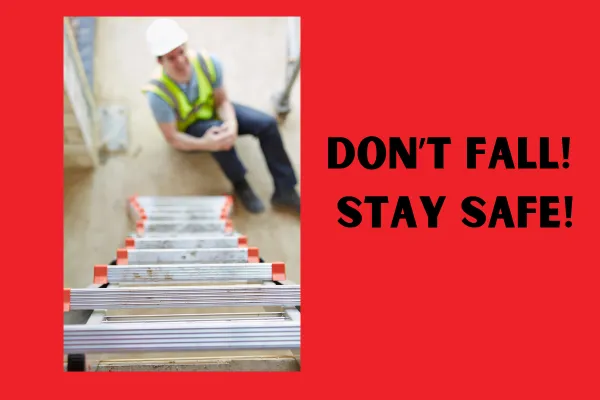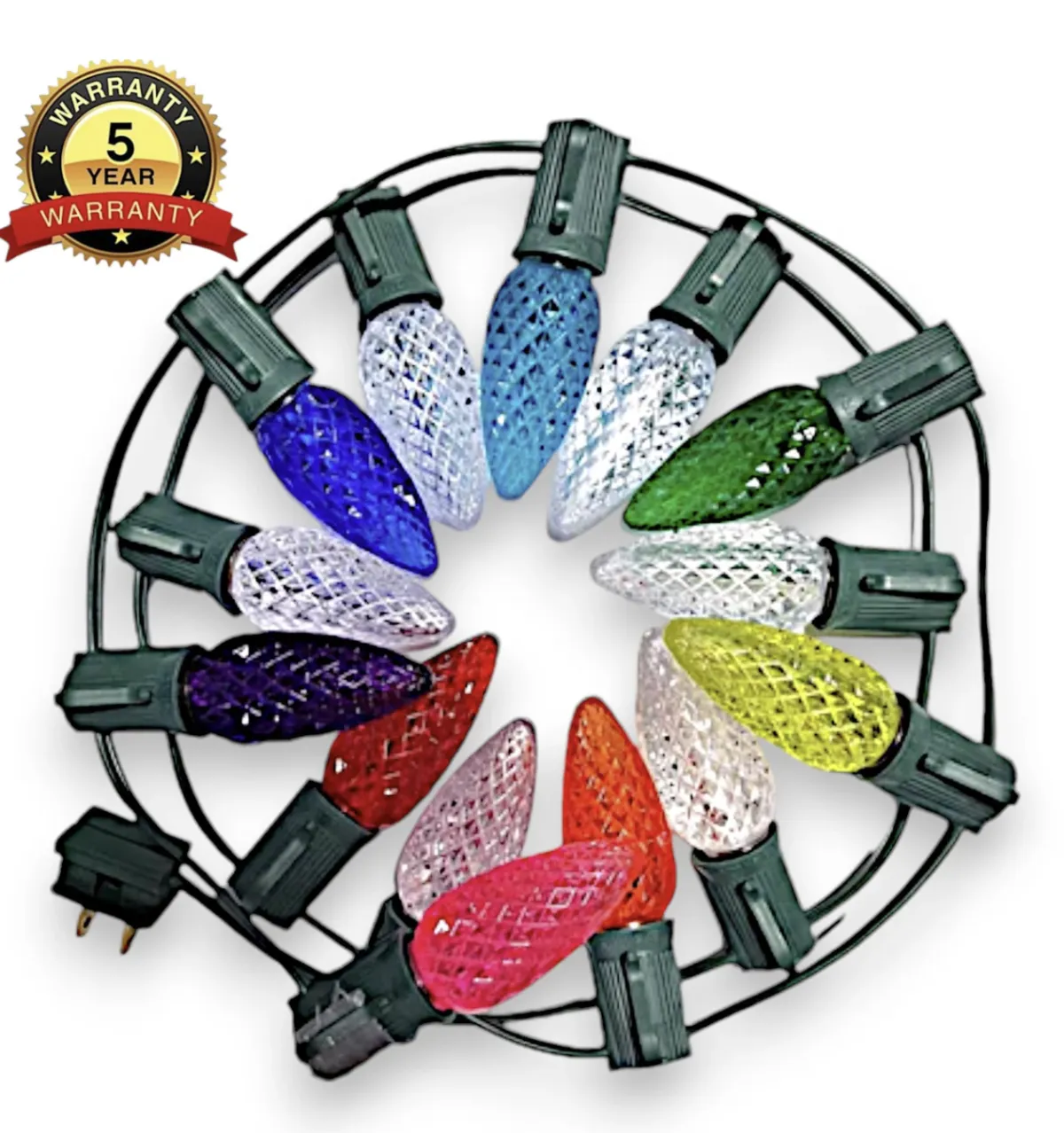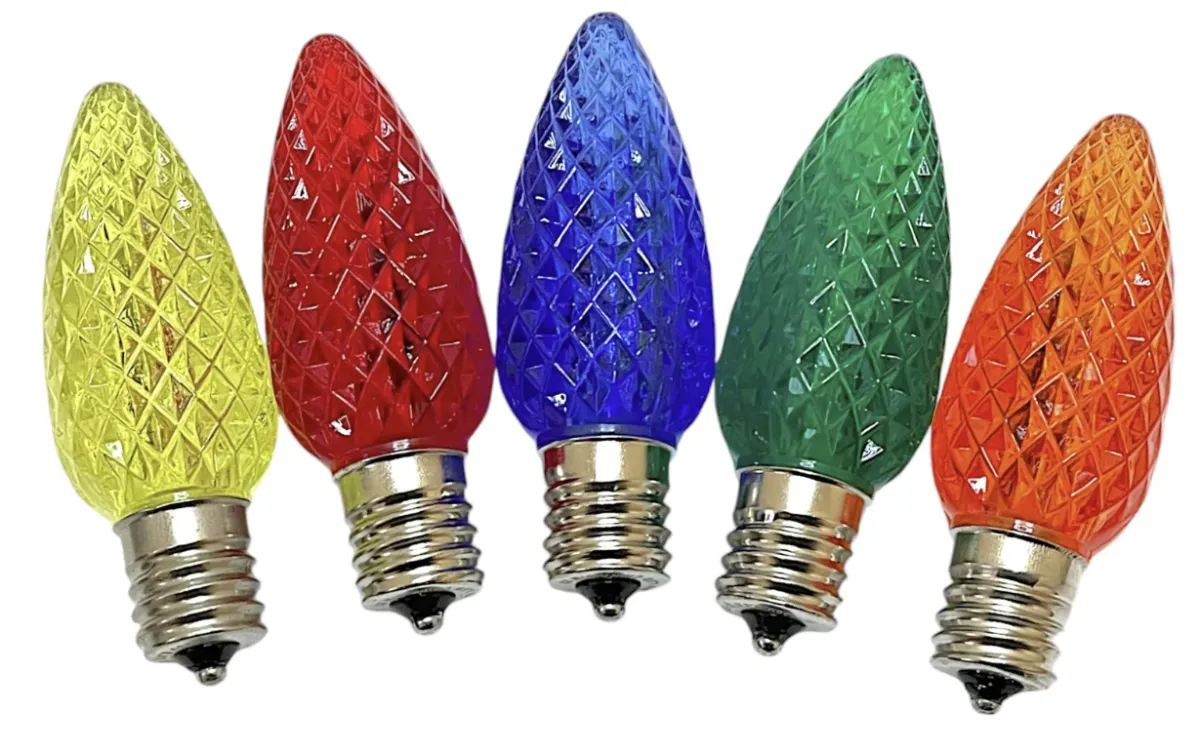Wholesale Pricing Presale Christmas Lights Bulbs
Pre-Season C9 Commercial Elite LED Bulbs
AS LOW AS $.50 Per BULB!
Want to know how to get the cheapest Christmas lights at wholesale pricing?
Just purchase before February 15, 2025 and save on C9 Commercial Elite LED Christmas Lights bulbs today. The more you buy, the more you save!
Experience the next level of holiday lighting with our C9 Commercial Elite SMD LED bulbs, featuring advanced Surface-Mounted Device (SMD) LED technology. These bulbs are designed to shine brighter and last longer, all while maintaining exceptional durability and energy efficiency. Perfect for both indoor and outdoor use, these bulbs are a must-have for any professional or residential Christmas light display.
Key Features:
SMD LED Technology: Offers a more brilliant light source with a reflective core design for superior optics, ensuring your
Virtually Unbreakable Construction: Highly durable bulbs are built to last, with a lifespan of up to 60,000 hours. These bulbs are designed to withstand the rigors of outdoor installations, making them virtually unbreakable.
Nickel-Plated Bases: Prevent corrosion and improve connectivity, saving you time and money during installation and ensuring reliable performance throughout the season.
Energy Efficient: Low wattage LED bulbs reduce power consumption by up to 90%, allowing you to safely create longer runs of light without overloading circuits.
Cool to the Touch: LED bulbs remain cool, even after hours of operation, making them safer to handle and install.
Larger Diamond-Cut Pattern: Faceted bulbs feature a diamond-cut design that generates beautiful light halos, adding a touch of elegance to any display.
Pre-Season C9 Minleon V2 LED Bulbs
AS LOW AS $.47 Per BULB!
Looking for the best deal on Christmas lights at wholesale prices?
Just purchase before February 15, 2025 and save on Minleon V2 LED Christmas Lights bulbs today. The more you buy, the more you save!
Enhance your professional-grade Christmas lighting displays with Minleon V2 LED C9 bulbs. Featuring a faceted finish, these bulbs cast a bright and inviting light, making them an ideal choice for creating stunning, energy-efficient holiday displays.
Upgrade your holiday lighting with Minleon V2 C9 LED Christmas Light bulbs and experience the benefits of bright, energy-efficient, and durable lighting solutions.
Key Features:
Durable Multi-Faceted Construction: These Minleon V2 LED bulbs are crafted from high-quality, multi-faceted plastic, ensuring they resist fading, chipping, and breaking. This durability makes them perfect for both commercial and residential installations, maintaining their vibrant appearance season after season.
Energy Efficiency: These LED Christmas light bulbs reduce power consumption by more than 90% compared to traditional incandescent bulbs. With an actual power consumption of just 0.58W, they allow for longer runs and lower energy costs, though it’s recommended to use 2W for installation calculation purposes.
Standard C9 Socket Compatibility: Designed to fit any standard C9 socket with an E17 base, these LED bulbs integrate seamlessly into your existing lighting setups, making them versatile and easy to use for any holiday lighting project.
Pre-Season C7 SMD LED Christmas Light Bulbs
As Low as $0.48 per Bulb!
Want to know how to get the cheapest Christmas lights at wholesale pricing?
Just purchase before February 15, 2025 and save on C7 SMD LED Christmas Lights bulbs today. The more you buy, the more you save!
Upgrade your holiday displays with our C7 SMD LED bulbs, featuring advanced Surface-Mounted Device (SMD) LED technology. These bulbs are designed to shine brighter, last longer, and provide exceptional durability, making them an excellent choice for both residential and commercial Christmas lighting.
Enhance your Christmas lighting with these energy-efficient, durable, and brilliantly bright C7 SMD LED bulbs, available now for professional-grade installations.
Key Features:
SMD LED Technology: Experience a more brilliant light source with SMD LED bulbs. The reflective core design enhances optics, ensuring your holiday displays are vibrant and eye-catching.
Virtually Unbreakable: These C7 LED bulbs are constructed from highly durable materials, making them virtually unbreakable. With a lifespan of up to 60,000 hours, they are built to withstand the rigors of outdoor and indoor installations.
Nickel-Plated Bases: The nickel-plated bases prevent corrosion and improve connectivity, saving you time and money during installation and ensuring long-lasting performance.
Larger Diamond-Cut Pattern: The bulbs feature a diamond-cut pattern with larger facets, generating beautiful light halos that add a touch of elegance to any holiday display.
Energy Efficiency: These low wattage LED bulbs reduce power consumption by up to 90% compared to traditional incandescent bulbs. This allows you to safely make longer runs of light without overloading circuits, making them ideal for large-scale installations.
Cool to the Touch: LED technology ensures that the bulbs remain cool, even after hours of use, enhancing safety during installation and operation.
Indoor/Outdoor Use: Perfect for both indoor and outdoor settings, these C7 SMD LED bulbs are versatile enough to meet all your holiday lighting needs.
Pre-Season C7 Minleon V2 LED Bulbs
AS LOW AS $.48 Per BULB!
Get the lowest prices on Christmas lights with our wholesale deal!
Just purchase before February 15, 2025 and save on C7 Minleon V2 LED Christmas Lights bulbs today. The more you buy, the more you save!
Our super bright and brilliant Multi Minleon V2 LED C7 replacement bulbs will save you money on your electric bill this year and for many more Christmas holidays to come.
Key Features:
These bulbs are made of durable, multi-faceted plastic so they won't fade, chip, or break like incandescent bulbs
Reduce your power consumption by more than 90% compared with conventional incandescent bulbs)
0.58W and 0.66W actual power consumption, but use 2W for installation calculation purposes
Fits into any standard C7 socket; E12 base
Frequently Asked Questions
What’s the difference between C9 and C7 LED bulbs?
C9 bulbs are slightly larger than C7 bulbs, making them ideal for larger displays such as rooflines, trees, and commercial decorations. C7 bulbs are smaller and better suited for smaller spaces, window frames, or accent lighting.
Are C9 and C7 bulbs interchangeable?
While both C9 and C7 bulbs use standard bases (E17 for C9 and E12 for C7), they are not interchangeable due to their size differences. Be sure to match your sockets to the correct bulb size.
Are C9 and C7 LED bulbs energy-efficient?
Yes! C9 and C7 LED bulbs consume up to 90% less energy than traditional incandescent bulbs. This energy efficiency allows you to safely run longer strands without overloading circuits.
Can I use C9 and C7 LED bulbs outdoors?
Absolutely! Both C9 and C7 LED bulbs are designed for indoor and outdoor use. They are highly durable, weather-resistant, and can withstand extreme temperatures, making them perfect for any holiday display.
Do C9 and C7 LED bulbs come in different colors?
Yes, C9 and C7 LED bulbs are available in a wide variety of colors, including warm white, cool white, red, green, blue, yellow, and multi-color options, allowing you to customize your holiday lighting displays.
How long do C9 and C7 LED bulbs last?
C9 and C7 LED bulbs are built to last with a lifespan of up to 60,000 hours. Their durable construction ensures they remain bright and vibrant season after season.
Discover Expert Tips on Our Blog

The Most Dangerous Christmas Light Install Mistakes
In the pressure washing and Christmas light installation industry, safety isn't just a buzzword—it's a matter of life and death. As someone who has witnessed numerous accidents and their aftermath, I want to address the critical importance of safety practices in our industry. Recent incidents, including several falls and tragic accidents, have highlighted the urgent need for better safety awareness and implementation.
The Real Cost of Cutting Corners
Let's talk numbers: A back surgery can cost upwards of $180,000 for the first procedure alone, with follow-up surgeries potentially reaching $260,000. But the real cost isn't just financial—it's the impact on your life, your family, and your ability to work. As the saying goes, "Falling won't kill you, but that sudden stop will." This harsh reality is why we need to take safety seriously, whether we're working one story up or three.
Essential Safety Equipment
Ladder Safety
1. Ladder Stabilizers: These aren't optional extras—they're essential safety equipment. A ladder standoff or stabilizer can prevent the ladder from kicking out, one of the most common causes of falls.
2. Proper Angle and Positioning:
- Maintain a 75-degree angle (the optimal ladder angle)
- Extend three rungs above the roof
- Ensure the ladder is on level ground
- Use ladder leg adjusters for uneven surfaces
3. Three Points of Contact: Always maintain three points of contact when climbing—this means two hands and one foot, or two feet and one hand should be in contact with the ladder at all times.
Roof Safety
1. Pitch Hoppers: While useful, these can give a false sense of security. Remember: you're either all on or all off—never straddle or partially use these tools.
2. Harness Systems:
- Basic harness kit ($100-150)
- Goat Assist ($500-600)
- Ridge Pro ($600)
- Professional rope systems
3. Cougar Paws: Specialized footwear for better roof traction.

Electrical Safety in Christmas Light Installation
Electrical safety is just as crucial as fall protection. Here are key guidelines:
1. One Male End Rule: Only one male plug per line—you can have multiple female connections, but never multiple male ends.
2. Proper Connection Protection:
- Use female ends at termination points
- Position connections to allow water drainage
- Avoid using tape on connections as it can trap water
- Use clips to secure connections away from gutters
3. Power Management:
- Use remote controls for testing
- Always cut wires with power off
- Test installations systematically to avoid multiple trips

Best Practices for Working at Height
Before You Start
1. Look Up: Always check for power lines before setting up ladders or equipment.
2. Sound the Roof: Check for weak spots or rotted areas before walking on any roof.
3. Have a Fall Plan: Know where you could catch yourself or what you might grab if you start to fall.
During Work
1. Never Work Alone: Always have someone who can call 911 if needed. A real-life example: a pressure washer fell from a 6-foot deck, broke his back, and had to crawl to his truck to call for help because he was working alone.
2. Keep Your Phone on You: Carry your cell phone in a secure pocket while working.
3. Weather Awareness: Avoid roof work in wet, icy, or frosty conditions. Even morning dew can make surfaces dangerously slick.
Training and Certification
Investment in safety training is far less expensive than hospital bills or funeral costs. Consider:
1. OSHA 10 Certification: Especially important for rope and harness work.
2. Professional Safety Courses: Many companies offer specialized training for roof work and fall protection.
3. Regular Safety Meetings: If you have employees, document safety training and have workers sign off on procedures.
Special Considerations
Weather Conditions
- Never work on icy or frost-covered roofs
- Be aware that morning dew can create slippery conditions
- Wind can make ladder work particularly dangerous
Employee Safety
Remember that employees often try to exceed what they see you do—if you work unsafely, they may take even bigger risks. Set a good example by always following safety protocols, even for quick tasks.
Equipment Maintenance
- Regularly inspect all safety equipment
- Replace any worn or damaged items immediately
- Keep ladders clean and in good condition
- Check electrical equipment for wear or damage
Common Mistakes to Avoid
1. Overconfidence: Many accidents happen to experienced workers who become too comfortable with risks.
2. Rushing: Never compromise safety to complete a job faster or to squeeze in one more task.
3. Inadequate Equipment: Don't try to make do with improper tools or worn-out safety gear.
4. Working Alone: Always have a spotter for ladder work and someone available to call for help if needed.

The Business Case for Safety
While safety equipment and proper training represent an investment, consider the alternatives:
- Hospital bills ranging from tens to hundreds of thousands of dollars
- Lost work time and income
- Potential business closure due to injury
- Legal liability and increased insurance costs
Moving Forward: Building a Culture of Safety
As our industry continues to grow, with more people entering both pressure washing and Christmas light installation businesses, it's crucial to establish and maintain a strong safety culture. This means:
1. Regular Training: Invest in ongoing safety education for yourself and your team.
2. Proper Equipment: Budget for and maintain quality safety gear.
3. Clear Procedures: Establish and document safety protocols for all aspects of your work.
4. Zero Tolerance: Never compromise on safety for convenience or profit.
Remember, no job is worth risking your life or long-term health. The few extra minutes it takes to set up proper safety equipment, or the additional cost of quality safety gear, is insignificant compared to the potential consequences of an accident. As we continue to see accidents in our industry, let's commit to making safety our top priority and looking out for one another. After all, the best job is one that you can walk away from at the end of the day.
Whether you're new to the industry or a seasoned professional, take this message to heart: Safety isn't just about following rules—it's about going home to your family every night. Make the commitment to safety today, because tomorrow might be too late.

What is the correct angle for positioning a ladder?
A: The optimal ladder angle is 75 degrees. A good rule of thumb is the "one-quarter rule" - the ladder's base should be placed one-quarter of the ladder's working length away from the wall. For example, if you're climbing to a 12-foot height, the base of the ladder should be 3 feet from the wall. Additionally, make sure the ladder extends at least three rungs above the roof line for safe access.
Do I really need a ladder stabilizer?
A: Yes, ladder stabilizers are essential safety equipment, not optional extras. They prevent the ladder from kicking out, which is one of the most common causes of falls. A ladder stabilizer (or standoff) also helps protect gutters and provides better stability when accessing the roof. The cost of a stabilizer is minimal compared to potential medical bills from a fall.
When should I use a safety harness on a roof?
A: You should consider using a safety harness any time you're working on a roof, regardless of the pitch or height. While there's no specific pitch requirement that mandates harness use, remember that falls can happen even on seemingly "safe" low-slope roofs. A basic harness kit costs $100-150, a small investment compared to the potential cost of injury. More advanced systems like the Goat Assist ($500-600) or Ridge Pro ($600) provide additional safety features.
What's the proper way to handle electrical connections for Christmas lights?
A: Follow these key rules for electrical safety:
- Always have only ONE male plug per line
- Use female ends at termination points
- Position connections pointing down and away from gutters to allow water drainage
- Never use tape on connections as it can trap water
- Use clips to secure connections away from gutters
- Always cut wires with the power off
- Use a remote control for testing installations
Why shouldn't I work alone on ladder or roof jobs?
A: Working alone creates significant risks. If you fall or get injured, you need someone to call 911 immediately. There's a real example of a pressure washer who fell from just a 6-foot deck, broke his back, and had to crawl to his truck to call for help because he was working alone. Your spotter can also foot the ladder, watch for hazards, and help with equipment. Always have someone who can call for emergency help if needed.
What should I check before getting on a roof?
A: Before accessing any roof:
1. Look up to check for power lines
2. Sound the roof to check for weak spots or rotted areas
3. Assess weather conditions - avoid wet, icy, or frosty conditions
4. Ensure your ladder is properly positioned and secured
5. Have your safety equipment ready and properly fitted
6. Make sure you have a spotter present
7. Keep your phone on you for emergencies
What are the most common safety mistakes people make?
A: The most frequent safety mistakes include:
- Overconfidence/complacency, especially among experienced workers
- Rushing to complete jobs or "just one more task"
- Using inadequate or worn-out safety equipment
- Working alone without a spotter
- Not maintaining three points of contact on ladders
- Improper ladder positioning
- Not using ladder stabilizers
- Trying to reach too far instead of moving the ladder

How should I store and maintain my safety equipment?
A: Proper maintenance of safety equipment is crucial:
- Regularly inspect all safety equipment before each use
- Replace any worn or damaged items immediately
- Keep ladders clean and free from debris
- Store equipment in a dry place
- Document inspections and repairs
- Never use damaged equipment "just one more time"
- Follow manufacturer guidelines for replacement schedules
What safety training should I invest in?
A: Recommended safety training includes:
- OSHA 10 certification, especially if using rope and harness systems
- Professional safety courses specific to roof work
- Fall protection training
- Ladder safety certification
- Electrical safety training for Christmas light installation
- Regular safety meetings and updates for teams
- First aid and emergency response training
How much should I budget for safety equipment?
A: While safety equipment requires an investment, consider these typical costs versus potential medical bills:
- Basic harness kit: $100-150
- Goat Assist: $500-600
- Ridge Pro: $600
- Ladder stabilizers: $50-100
- Quality extension ladder: $200-400
- Cougar Paws (roof boots): $100-200
- Remote power controls: $50-100
- First aid kits: $50-100
Remember: A single back surgery can cost $180,000 or more. Even the most expensive safety equipment is a bargain compared to medical bills, lost work time, or worse. Investment in proper safety equipment should be considered a necessary business expense, not an optional extra.
Copyright ©2024 All Right Reserved website designed by christmaslights.io
Terms of Service / Privacy Policy
Have questions or need assistance?
Contact us at (855)619-LITE




